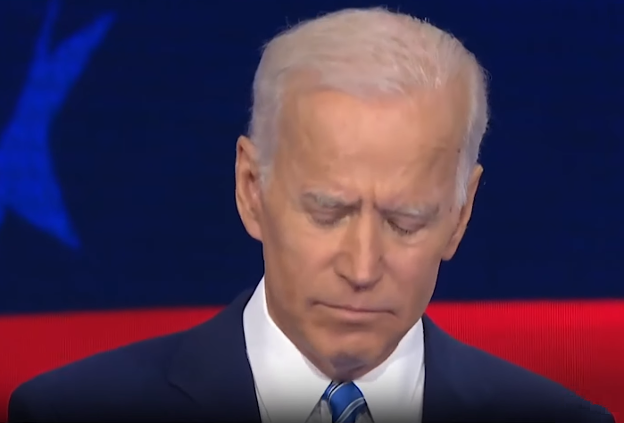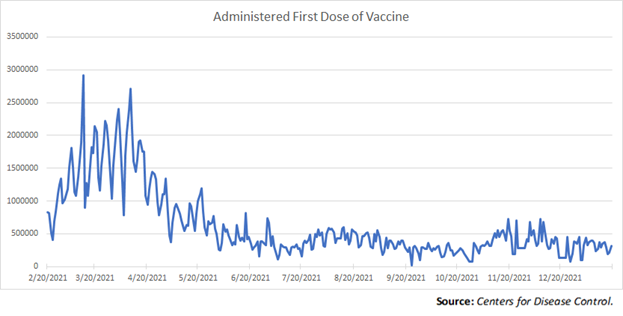
Since the very first presidential election in 1788 and 1789, there have been 11 first-term presidents who stood for reelection and were defeated, including the most recent incumbent, former President Donald Trump, who narrowly lost his reelection bid in 2020.
But only twice in American history and once in modern American history have there been two consecutive first-term presidents who were then defeated in their reelection campaigns. In the 1880s and 1890s, it was Grover Cleveland and Benjamin Harrison. In the modern case, it was Gerald Ford and Jimmy Carter. Why?
The 1970s basically sucked. The end of the gold standard. Wage and price controls. The Arab Oil Embargo of 1973. The misery index of inflation and unemployment. Watergate. The independent counsel. The humiliating defeat of the U.S. in Vietnam and the fall of Saigon in 1975. The Church Committee.
The icing on the cake were twin recessions in 1975 and again in 1980, both of which helped defeat Ford, who lost narrowly, and then Carter, who lost by lot.
The difference there was the 1975 recession was over by the time Ford was running in 1976, whereas the 1980 recession, with double digit inflation plus rising unemployment throughout most of the year — it peaked in July 1980 at 7.7 percent — enabled Ronald Reagan to easily defeat Carter in a 44-state landslide.
It was Carter on July 15, 1979 who introduced Americans to the “crisis of confidence” in a televised speech that became infamously known as the “malaise” speech even if it never included that word.
Carter was trying to change the subject away from energy and inflation, and so spoke of a crisis of confidence in America itself. It turned out to be an ill omen of his own election chances in 1980. It was the President who had lost America’s confidence, not the other way around, as it turned out.
Now, one year into President Joe Biden’s first term of office, and it’s hard not to see strong similarities to the 1970s. 7 percent inflation. A humiliating U.S. defeat in Afghanistan as the fall of Kabul was televised, with hundreds of Americans stranded as the Taliban easily reclaimed control of the country. The ongoing Covid-induced supply chain crisis. A failed legislative agenda.
On the pandemic, America did not have enough Covid tests available this month after a year under Biden as likely Covid cases peaked at 6.4 million a day on Jan. 2, according to the latest projections by the Institutes for Health Metrics and Evaluation. Now, the Biden administration is touting mail order tests that would arrive only weeks after the omicron variant has already washed over most Americans. Again, cases already peaked two weeks ago.
We didn’t run out of tests last winter under Trump, but we did under Biden.
On top of that, Biden wasted a year on Covid vaccine mandates on private employers that the U.S. Supreme Court quickly struck down and also on demonizing the minority of American adults who have chosen not to get a vaccine, which reduced the amount of people getting vaccines voluntarily.
In the first 28 days after Biden’s Sept. 9, 2021 vaccine mandate announcement, 7.9 million first-time doses of the Covid vaccine were administered (282,000 average daily), compared with 11.8 million in the 28 days prior to the announcement (421,000 average daily) when the delta variant emerged, according to data from the Centers for Disease Control and Prevention. The next 28 days were even worse, just registering 6.2 million first doses (221,000 average daily) through Nov. 3.

It would not increase substantially until the 28 days after that, through Dec. 1, when 11.3 million first doses were administered (404,000 average daily). Turns out Thanksgiving with the family was more persuasive than Biden’s mandates, and even then that was a close third to the delta variant. In fact, far more Americans got the vaccine earlier in 2021 before there were any mandates.
With the policy now history, all Biden accomplished was further dividing Americans and lowering his public approval, which by every measure, is in the toilet.
Quinnipiac had Biden at just a 35 percent approval, and a 54 percent disapproval rating earlier this month. Both Gallup and Politico have him at 40 percent approval and a whopping 56 percent disapproval.
After just one year in office, that’s pretty bad.
But to be fair, in 2017 Trump — who was dogged by what turned out to be a fraudulent, top secret investigation by the FBI and U.S. intelligence services, and later Special Counsel Robert Mueller, falsely accusing Trump of being a Russian agent and a traitor — had similarly bad numbers in his first year in office before they rebounded slightly in 2018.
The question becomes: Is Biden on the same path now? Are we seeing a repeat of history? Could 2024 be the first time since the 1970s that we have two consecutive one-term presidents be defeated at the ballot box?
A lot depends on Biden himself, who will turn 80 years old in November, if he even decides to run again. If he doesn’t, that would put him in the rare company of Lyndon Johnson, who with the Vietnam War viewed as unwinnable, opted in 1968 not to seek another term in office after winning in a landslide in 1964.
In the meantime, the economy is a wild card. The jobs picture has been a bright spot for the Biden administration, with the unemployment rate all the way down to 3.9 percent from its peak of 14.7 percent in April 2020. Of the 25 million jobs initially lost to Covid, more than 16.7 million were recovered in 2020 under Trump, and another 6.1 million in 2021 under Biden.
That’s right now. But with inflation becoming sticky, is the U.S. economy already overheating, and could another recession and surge in unemployment be on the horizon?
To be sure, waiting in the wings is former President Trump, who appears to be toying with the idea of a political comeback by potentially running for a third time in 2024.
In many ways, what Trump does could determine what Biden does. If Biden is still viewed amongst Democratic Party elites as the only candidate who could beat Trump again, then it could be that Trump’s threat to run helps to keep Biden on the board, even in his weakened state and failed first year in office.
2022 will be a challenging year for Democrats. In midterm elections dating back to 1906 through 2018, the party that occupies the White House usually loses on average 31 seats in the House, and about three seats in the Senate. That’s more than enough for Republicans to take back one or both chambers of Congress in 2022.
That said, even after midterm drubbings in 1994 and 2010, both Bill Clinton and Barack Obama went on to win relatively easy reelections in 1996 and 2012.
When you get down to it, it is really, really hard to defeat an incumbent president. If Biden runs again in 2024, much will depend on how bad the Democratic Party primary challenges, which tend to expose weak incumbents, are in wounding him.
Trump, who was not a weak incumbent, nearly won in 2020, losing by a scant 43,000 votes in the swing states of Georgia, Arizona and Wisconsin. Meaning, even if Biden appears weak now — as Trump did in 2017 — defeating him in 2024 is by no means a fait accompli, assuming Biden even runs. Stay tuned.
Robert Romano is the Vice President of Public Policy at Americans for Limited Government Foundation.
Correction: There were two instances of first term presidents losing reelection in a row, not one: Grover Cleveland and Benjamin Harrison, and Gerald Ford and Jimmy Carter.
A version of this article appeared on algresearch.org.





